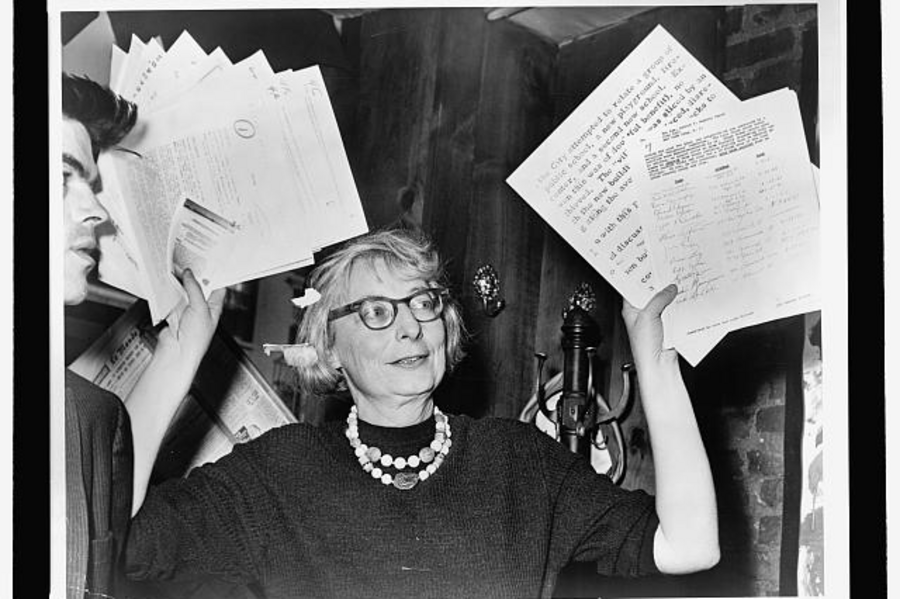Jane Jacobs: What would the urban visionary think of US cities today?
Loading...
Jane Jacobs never had any formal training as an urban planner, yet her mid-20th-century ideas about American cities remain influential today.
In her most famous book, "The Death and Life of Great American Cities," published in 1961, Jacobs explained the importance of a well-designed neighborhood for fostering community.
Manhattan's Greenwich Village, where Jacobs lived a large portion of her life, is the perfect example of a neighborhood, she explained. Neighborhoods should have winding, narrow streets with a mixture of apartment buildings, businesses, and townhomes close to the sidewalk and intertwined with one another.
The city, when designed correctly, has a life of its own, Jacobs wrote:
Under the seeming disorder of the old city, wherever the old city is working successfully, is a marvelous order for maintaining the safety of the streets and the freedom of the city. It is a complex order. Its essence is intricacy of sidewalk use, bringing with it a constant succession of eyes. This order is all composed of movement and change, and although it is life, not art, we may fancifully call it the art form of the city and liken it to the dance – not to a simple-minded precision dance with everyone kicking up at the same time, twirling in unison and bowing off en masse, but to an intricate ballet in which the individual dancers and ensembles all have distinctive parts which miraculously reinforce each other and compose an orderly whole. The ballet of the good city sidewalk never repeats itself from place to place, and in any one place is always replete with new improvisations.
Although she never finished college, Jacobs moved to New York City in 1934 and began working as an editor for Architectural Forum in 1952. During these post World War II years, prominent New York urban planners were pushing well-ordered, affluent, sprawling suburbs. But Jacobs disagreed, arguing that cities were most successful when old and new buildings, affluent and low-income housing, were all intermixed. The car, she argued, was ruining American cities.
"Jacobs was not just a writer who had big ideas, she was also the champion of those ideas in the real world," writes Time. "At the time city planning aimed to make cities orderly, with tall buildings and open space, and had no qualms about demolishing large swaths of neighborhoods to make their ideas reality."
Jacobs is also famous for her opposition to developer Robert Moses and his plans for the Lower Manhattan Expressway, which would have been a 10-lane road across the SoHo and Little Italy area of Manhattan. She was arrested for rioting at a public hearing for the highway in 1968, and the project was later abandoned.
But her vision of diverse communities is seeming more and more unrealistic today. From Greenwich Village to Portland, Ore., and San Francisco – cities that emulate Jacobs' vision – are no longer the examples of diversity. Now, these areas are mostly white and affluent, as rents have soared. In Greenwich Village, for example, the average rent today for a two-bedroom apartment is between $4,281 and $6,101.
However Jacobs recognized that her vision of a successful city can be "self-undermining," as Slate explains. Because people are attracted to cities designed for community, these same cities have to actively commit to affordable housing to maintain diversity.
"Ms. Jacobs's enormous achievement was to transcend her own withering critique of 20th-century urban planning and propose radically new principles for rebuilding cities," The New York Times writes in its obituary for Jacobs in 2006. "At a time when both common and inspired wisdom called for bulldozing slums and opening up city space, Ms. Jacobs' prescription was ever more diversity, density and dynamism – in effect, to crowd people together and activities together in a jumping, joyous urban jumble."
Jacobs would have been 100 years old on Wednesday.






